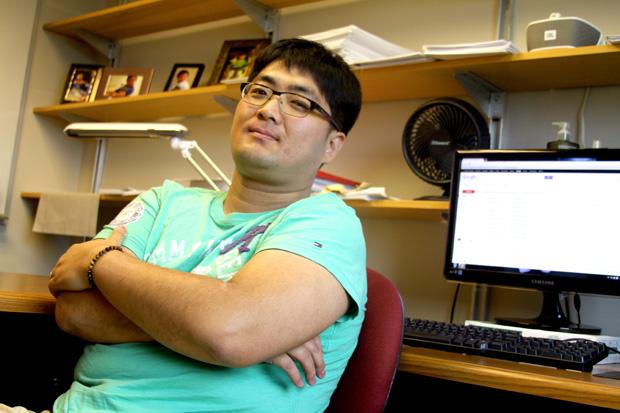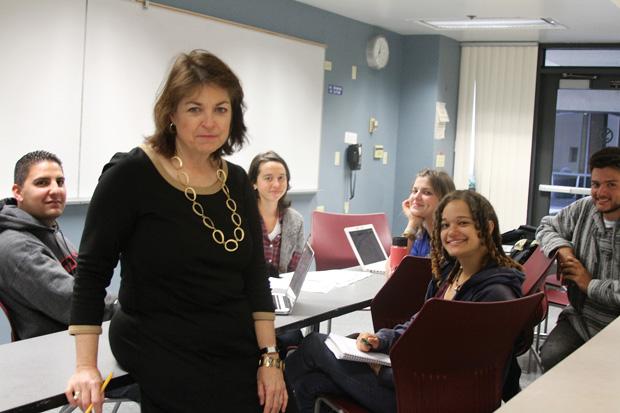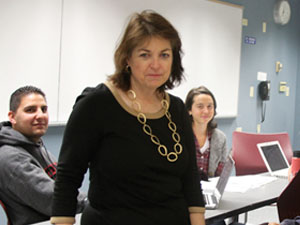As part of the Daily Sundial’s “Investigation Into Education” series, the differences between tenured (professors), non-tenured (lecturers), and tenure-track faculty were broken down into clear and distinct levels for students to understand the roles of a teacher and why they matter.
How it works:
Professors have the opportunity to earn tenure after their sixth year teaching on campus. CSUN’s tenure procedures are outlined in Section 600 of the Administrative Manual, available on the Faculty Affairs website. The section is used as a standard for each department, since they all have slightly different standards and requirements for their specific subject.
As outlined in Section 600, a committee of senior and already tenured faculty members sit on the Personnel Committee, to discuss and evaluate a candidate’s possibility of receiving tenure. They will also consult with the department chair, and the two parties will come to agree on whether or not to reward tenure. If the two groups can not agree, the issue is brought to the University President to decide.
The criteria:
Section 600 asks the committee to base its judgements on four core principles: teaching effectiveness, research and publications, service to the university and community and overall collegiality.
Teaching effectiveness is determined by classroom visits from the Personnel Committee and evaluations from students. The committee will review them and use the student input to determine the candidate’s progress.
The evaluations are not just for the committee to see. Once the semester is over and grades are posted, teachers can get back evaluations and look over them to see what they need to improve on.
Research and publications are used to measure a teacher’s level of contribution to their respective field.
The Personnel Committee will generally take about a year to evaluate a teacher’s eligibility for tenure. The process involves multiple classroom visits and an overview of the candidate’s Personnel Action File (PAF) and Professional Information File (PIF).
The PAF is maintained by the dean of a professor’s college, and includes items such as their acceptance letter, personal reviews, or letters of recommendation.
A PIF is created and submitted by individual faculty members, and is used during their tenure evaluation. The file contains the professor’s achievements, awards and other items that represent their accomplishments. The PIF is not only used by faculty vying for tenure, but can also be used in evaluations for promotions and reviews of tenured professors.
Tenure-track:
The term “tenure-track” is used to refer to teachers working towards tenure and those who have already earned it. There are three different classifications of CSUN tenure-track teachers: assistant professor, associate professor, and professor.
When first hired, a teacher starts as an assistant professor. This is the time when fledgling teachers establish themselves in the classroom and become part of the campus.

Photo credit Karla Henry/Daily Sundial
Assistant Professor Joon Young Hur was hired by the economics department last fall, and already has a number of goals he is pursuing to help him receive tenure.
“My goal is to deliver good understanding to my students so that they can think critically about some economic issues in their everyday life,” he said. “Also, writing a number of meaningful papers is another goal of mine at CSUN.”
Hur specializes in researching macroeconomics and hopes to continue his studies once he receives tenure.
“Getting a tenure will enable me to investigate broader research topics I have in mind,” Hur said. “Some research takes much more time than others, and this kind of research is hardly being conducted under a non-tenure environment.”
Promotion to associate professor, the next rank, usually happens in tandem with a teacher receiving tenure. However, one does not guarantee the other.
Professor (tenured):
After five years of working as an associate professor, teachers have the option to apply to be a full professor. By this time, they are usually tenured.
“I don’t just think of tenure as a benefit, it’s more of a responsibility. There’s a gravity to it,” said Dr. Jackie Stallcup, head of the English department. Stallcup worked as a professor for a number of years before becoming department head two years ago.
To keep professors from slacking off after receiving tenure, evaluations are given every five years. If a professor is struggling or has not made any progress in a while, other faculty members will step in to help.
There are also programs on campus, such as Center for Innovative & Engaged Learning Opportunities at CSUN (CIELO), which assists with faculty development.
“The mentoring process is long term,” Stallcup said. “We all need it sometimes and we all give it.”
Lecturers (non-tenure):
The majority of faculty on campus are lecturers who are not tenured or even tenure-track. As of February, 832 tenured and tenure-track professors were on campus. However, the number of part-time lecturers and coaches outnumbered them at 1,243.

“How do you make this university better by being here? It’s not just about the individual, it’s about all of us,” said Dr. Melanie Williams, head of the Business Law department,
Williams worked at CSUN as a lecturer before being hired as an assistant professor.
Teachers who are classified as lecturers have no tenure no matter how long they have been on staff. Often times, many lecturers are professionals who enjoy teaching on the side or are supplementing their income, Williams said.
The committee will also look at a candidate’s work with the university itself. Teachers are encouraged to sit on a number of different committees, perform community service off campus and help with student advisement.
“It’s good to share ideas. It helps start spirited discussions and elevate CSUN’s profile,” she said.
Lecturers do not have a lot of say in the course curriculum, and they receive lower pay than tenured staff. They also have different standards to work with.
“In theory, demands upon them for research and publication are much less,” Williams said. “But from a student perspective, there’s not much of a difference.”
“I was waiting for a spot on staff to open up,” she said. “But I kept publishing because that’s what you do. You work for the job you want.”





